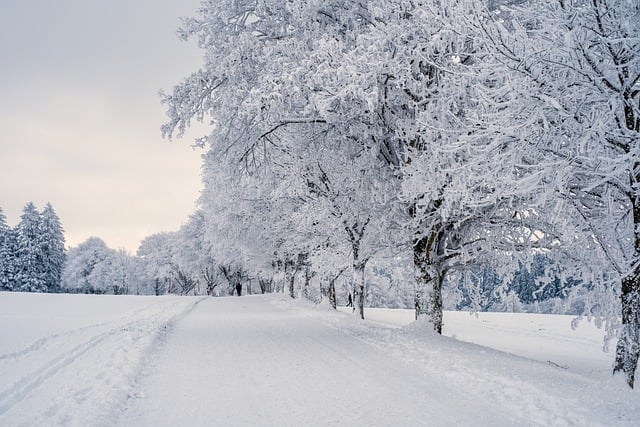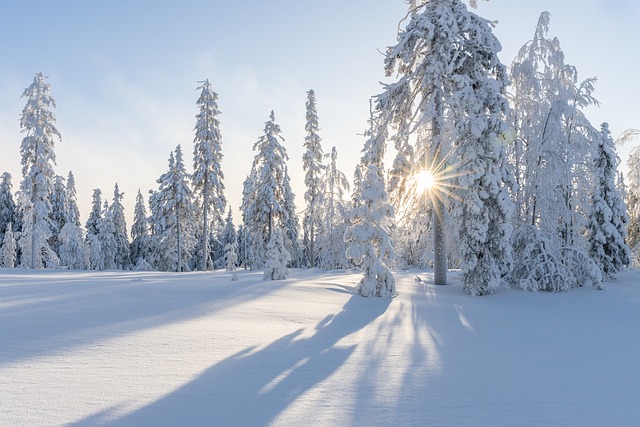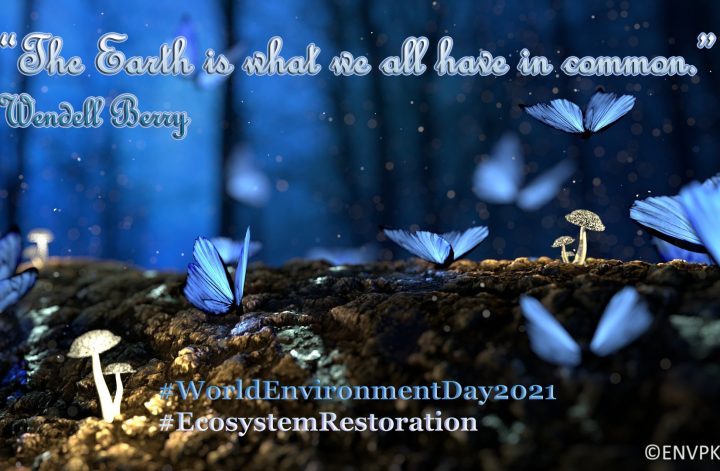The consistency of winter brings nostalgic warmth as we cuddle up by the fireplace with a hot cup of cocoa and look out at the snow-covered scenery. But in recent years, the highly unpredictable patterns of winter brought forth by climate change have completely turned upside down our seasonal expectations. The calendar, which used to be a dependable source of information about when to put on our winter coats and when to store them away, is becoming less and less trustworthy. It’s time to accept that the climate will cause disruption on a calendar and to adopt adaptable tactics that put readiness and resilience first. The world that we used to know, with its predictable seasons and recognizable climatic patterns, is drastically changing. Now that winter has become elusive, it is no longer greeted with a sudden cold in the air or a timely coating of snow. Winter arrivals are becoming less predictable, which is a troubling effect of climate change. It is becoming more and clearer that our society’s standards and expectations need to change to accommodate this new reality as we struggle with the ramifications of this dramatic transition.
Also check out: We Can’t Afford To Ignore or Deny Climate Change Anymore
The Changing Face of Winter
Winter, which used to be a season, has now become quite unpredictable defying our expectations and making it harder for us to adapt. In the past, we could count on dropping temperatures, timely snowfall, and a gradual thaw, in spring. However, due to climate change disrupting these patterns winters have become warmer snowfalls are. We face weather events that catch us off guard. Traditionally winter was known for its punctuality. An arrival heralding seasonal activities and preparations. Recent years have seen a departure from this reliability. In the not past winter would announce its arrival with a gradual cooling of temperatures and the first peaceful blanket of white snow covering the landscape. This predictable rhythm allowed communities to prepare for winter storms while farmers planned their planting and harvesting schedules accordingly. Winter sports enthusiasts eagerly anticipated engaging in their activities.
However, things have changed now as winter unfolds in a manner that challenges our held expectations. According to reports from NASA (National Aeronautics and Space Administration), the Arctic is warming at twice as fast as the average rate. This has led to climate shifts such as changes, in jet stream patterns and polar vortex dynamics. These alterations play a role in the delayed arrival of winter, in regions, across the globe.
Based on data, from reputable sources like the National Oceanic and Atmospheric Administration (NOAA) and the Intergovernmental Panel on Climate Change (IPCC), it has been observed that winter is starting later than usual causing disruptions to our expected seasonal patterns. Over the century the global average temperature has increased by 1.2 degrees Celsius since the preindustrial time of the 1800s with winter temperatures experiencing a particularly significant rise. NOAA records confirm that the global temperature has been steadily rising over the century leading to changes in precipitation patterns and temperature fluctuations. This warming trend has ranging implications for our winter experiences impacting aspects such as outdoor activities, agriculture, and infrastructure. The changing precipitation patterns and temperature fluctuations resulting from this increase in temperature influence when winter arrives and how intense it is contributing to the current state of climate unpredictability.
The Ramifications of Late Winter
The late arrival of winter poses a range of difficulties. Economically speaking this has implications for industries that heavily depend on a consistent winter season. Ski resorts for example are experiencing dwindling snowfall and a shorter window for winter sports activities. This not only impacts economies but also leaves enthusiasts longing for the days when reliable powder could be counted on. Ski resorts for example have seasons and irregular snowfall impacting their performance and the livelihoods of those who rely on the winter tourism industry. Industries that depend on winter conditions like winter sports and tourism face challenges as the duration and reliability of snowy landscapes become increasingly uncertain.
One noticeable consequence of this disruption is the nature of snowfall. In regions winter used to mean a layer of snow covering everything and creating a picturesque winter wonderland. However recent years have witnessed a decrease in both the frequency and intensity of snowfall transforming some areas into extended autumns than winters. This change poses challenges for industries, like skiing that heavily rely on snowfall. Resorts that used to flourish due, to winter weather are now encountering difficulties as warmer temperatures and inconsistent snowfall disrupt the usual ski season. The image of skiers gracefully gliding through snow has become harder to come by these days. Instead, we rely on snowmaking and have a shorter timeframe to enjoy winter sports.
The late arrival of winter isn’t an inconvenience; it has far-reaching effects, on various aspects of our lives. One area that is noticeably impacted is agriculture. Farmers, who traditionally rely on cues for planting and harvesting, now have to deal with weather patterns. Delayed winters can result in crop failures affecting food production and economic stability. For generations, they have relied on the rhythms of the seasons to guide their planting and harvesting schedules. However, with winters becoming milder and less consistent farmers are now grappling with obstacles. While frost-free winters may initially seem appealing they disrupt the balance of temperature, precipitation, and sunlight that many crops rely on, for growth. As a result, farmers must now reassess their planting timelines. Adapt to a shifting climate calendar.
Agriculture is another sector deeply intertwined with rhythms that are affected by delayed winters. Crops that traditionally thrive in temperatures now face disruptions in their growth cycles, which negatively impact both quality and yield. The intricate dance, between planting and harvesting that has been finely tuned over generations is now thrown into disarray requiring farmers to develop strategies to navigate this changing landscape.
You might also like to read: Climate Change Is Increasing Food Shortage Around The World
Beyond the implications, the irregularity of winters has social and environmental consequences. Extreme weather events such as periods followed by sudden cold snaps wreak havoc on ecosystems. Plants and animals adapted to thrive in winter conditions face threats as their habitats undergo rapid transformations. This disrupts the balance as organisms struggle to adapt to changes, in their environment. The disruption of patterns has an impact, not just, on wildlife but also, on industries that depend on these patterns like bird watching and ecotourism.
Apart, from the impacts the delayed arrival of winter affects our everyday lives. One important aspect to consider is health. The elderly and vulnerable populations, who rely on winter shelters and heating assistance programs, may find themselves exposed to conditions for periods. The World Health Organization (WHO) highlights the risks associated with cold; and emphasizes the importance of adequate shelter and warmth, in preventing weather-related health issues. Additionally, we cannot underestimate the toll it takes on health. Seasonal affective disorder (SAD) a type of depression often known as “winter depression” linked to changes becomes more challenging to predict and manage in the face of unpredictable winter patterns. The familiar and comforting emotions that winter used to bring are now being replaced by feelings of confusion and doubt.
Dealing with the Chaos of an Unpredictable Calendar
So how can we navigate through the chaos brought about by winters due, to climate change? The key lies in embracing strategies that prioritize resilience and preparedness. Of holding onto outdated notions of what a “typical” winter should be we must accept and adapt to the new normal imposed on us by climate change. Beyond numbers and statistics, there is an experience at play as we adjust to this unpredictable climate calendar. People and communities who were once accustomed to a rhythm of life now find themselves exploring territory. Winter celebrations once associated with snowy landscapes now take place amidst uncertainty. Psychologically speaking the emotional toll of these changes is evident. The shift in expectations can leave people feeling disoriented and out of touch with nature’s rhythms. It’s not just individuals who are affected; communities built around traditions are questioning whether these practices are sustainable given the unpredictability brought on by climate change.

Strategies for Adaptation for the Future
In light of the challenges brought about by climate-induced disruptions to our expected seasons, it becomes increasingly clear that adaptive strategies are necessary for our resilience and preparedness, in navigating this reality.
Our main focus should be, on allocating resources to construct infrastructure that can withstand the challenges posed by winter weather. This will help us ensure our resilience against the impacts of climate change. We need to upgrade our transportation systems to handle snowstorms or ice events reinforce buildings to endure temperature fluctuations and develop innovative solutions for energy distribution that can adapt to changing demand patterns. Our built environment must adapt and withstand the effects of shifting climate patterns. Climate resilience measures, such as structures in flood areas and reinforced buildings capable of withstanding severe weather events should be integrated into infrastructure projects.
In addition to infrastructure, we need to invest in agricultural practices that can thrive despite a changing climate calendar. This involves researching and developing crops that’s more resistant to temperature variations implementing water management practices that address changing precipitation patterns and enhancing our understanding of how climate change affects different regions and ecosystems. Farmers must explore crop diversification. Embrace varieties that can withstand challenging climatic conditions. By investing in technology that provides real-time weather data and predictive analytics farmers can make decisions. Mitigate risks associated with late winters. Regions reliant, on industries should consider diversifying their economic base. For example, communities that heavily depend on winter tourism could consider diversifying their sources of income to mitigate the effects of winter conditions.
The public needs to have an understanding of climate change and its consequences. Educational initiatives and awareness campaigns have the power to empower individuals enabling them to make choices that reduce their impact and contribute to overall climate resilience. Education also plays a role, in building resilience against the effects of climate change on winter. By increasing awareness about how climate change affects winter patterns, we can empower individuals and communities to take steps. This includes educating farmers about practices teaching children about the importance of taking care of our environment and fostering a broader understanding of how our actions are interconnected with the health of our planet.
Collaboration between governments and research institutions is essential in developing policies that are informed by the insights. This involves investing in energy-promoting land use practices and implementing policies that incentivize environmentally conscious behaviors. Government policies should reflect the urgency of the situation by addressing both the root causes of climate change and preparing for its consequences. This includes transitioning towards energy sources implementing regulations that encourage infrastructure development and supporting research and innovation in areas related to climate adaptation.
Personally, when it comes to embracing strategies we need to take a step back and reassess our expectations and behaviors. As we adjust our clothing choices to accommodate the milder temperatures and take steps to prepare for weather events we as individuals can play a vital role, in building personal and community resilience. Communities can contribute by fostering a sense of responsibility. This can be achieved by creating platforms for sharing knowledge supporting initiatives that promote sustainability and advocating for policies that prioritize climate resilience. By engaging in these efforts communities can navigate the uncertainties brought about by the changing season from winter to spring.
On a scale, it is crucial to change the narrative surrounding winter. Of fearing its unpredictability we should approach it with curiosity and adaptability. By reframing our understanding of winter as an evolving season we open ourselves up to solutions and possibilities.
Also read: What is Climate Change Adaptation? – Importance and Methods
Conclusion
The erratic changes, in our climate calendar serve as a reminder that the world is transforming necessitating our adaptation. The delayed arrival of winter is not merely an inconvenience; it serves as an indication of the challenges that demand our attention. As we grapple with these shifts our collective future will be defined by how we adapt, display resilience, and embrace preparedness. It is crucial that we move beyond lamenting the loss of seasons and instead focus on measures.
By incorporating approaches, in agriculture, infrastructure, and economy promoting education and raising awareness as well as encouraging collaborative research and policy formulation we can effectively navigate the uncertainties of winter while constructing a future that is both resilient and sustainable. The way we respond to the changes, in our climate will not determine our ability to handle current challenges but also shape the future of our environment for generations to come. In conclusion, dealing with the nature of climate patterns requires a change in how we approach winter. It is no longer enough to rely on outdated notions of what a “normal” winter should be. Instead, we need to prioritize adaptability and preparedness at individual, community, and societal levels. By recognizing the impact of climate change, on winter weather and taking measures to address them we can overcome the obstacles ahead. Create a future where winter remains a season filled with both awe and resilience.
You might also be interested in: 10 Simple Ways You Can Raise Awareness About Climate Change
This article was contributed by Fatima Haider. The author is a student of MPhil Degree in International Relations at National Defence University Islamabad. Her areas of interest include Cyber security, Climate Security and International Politics of China, and India. She can be reached at www.linkedin.com/in/fatima-haider-awan & She Tweets @__fatimahaider
We hope you liked this post! Please comment below if you have any suggestions, comments or feedback! We at #envpk love hearing from readers! Thanks!




